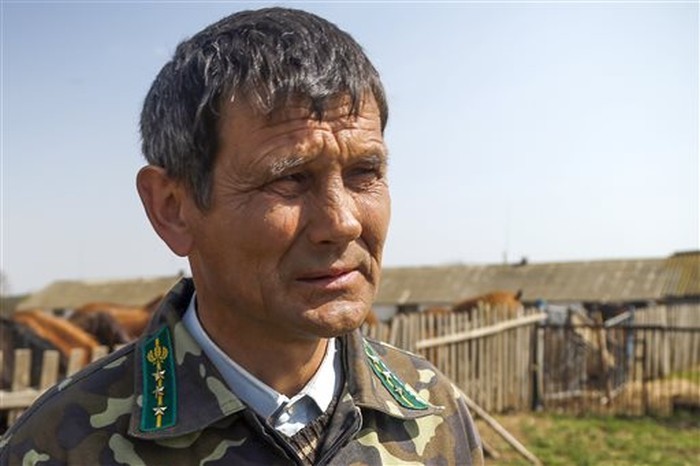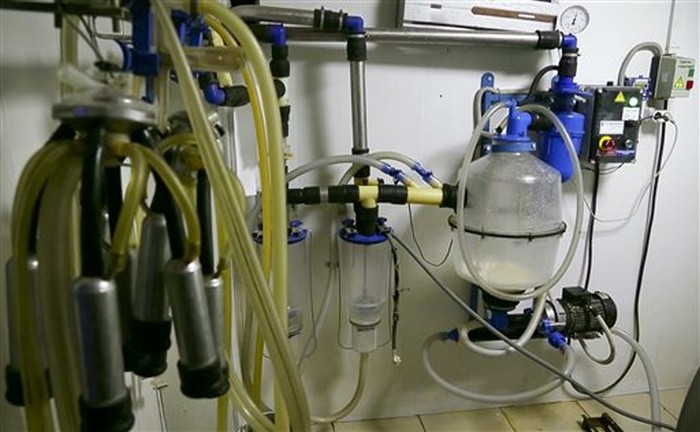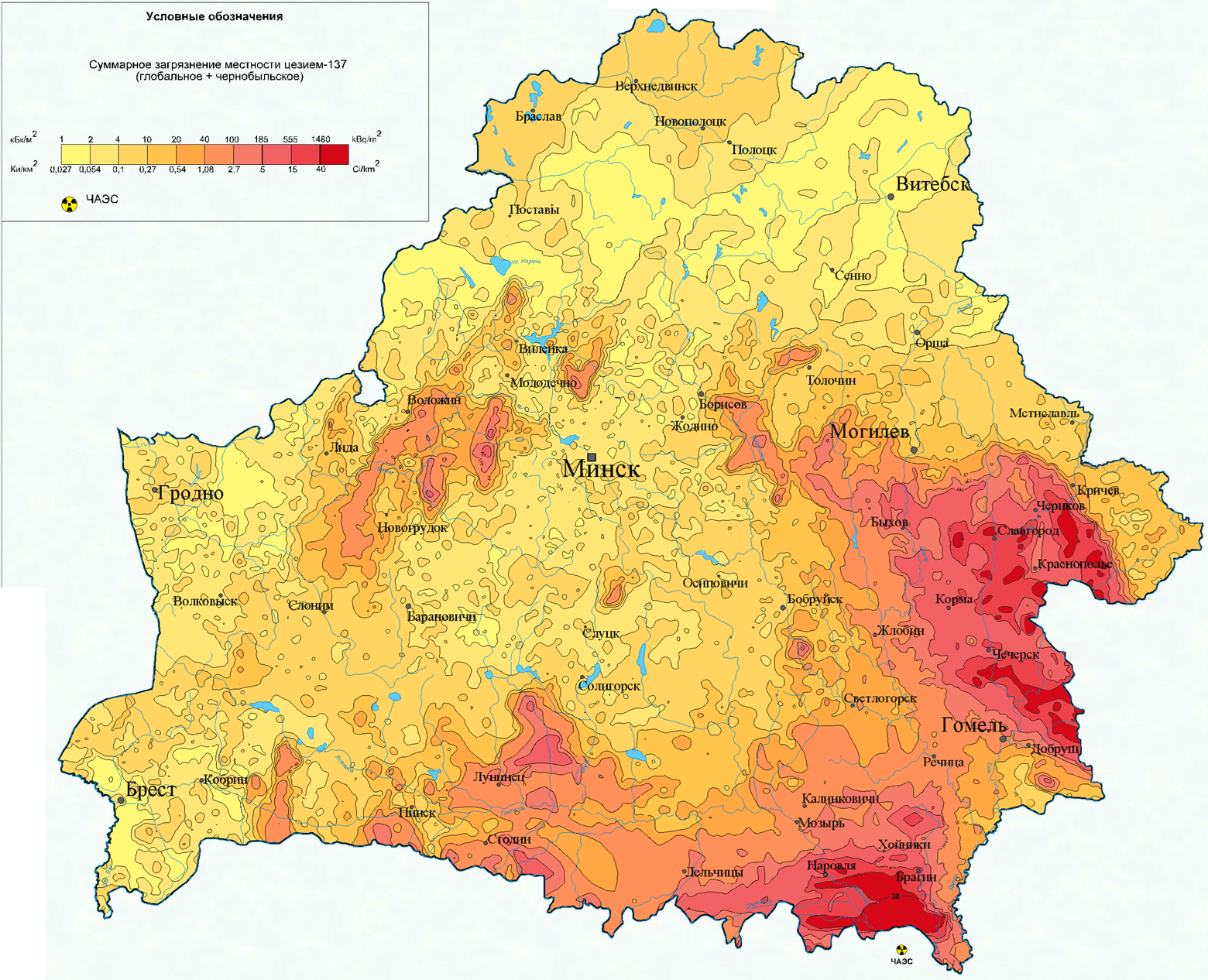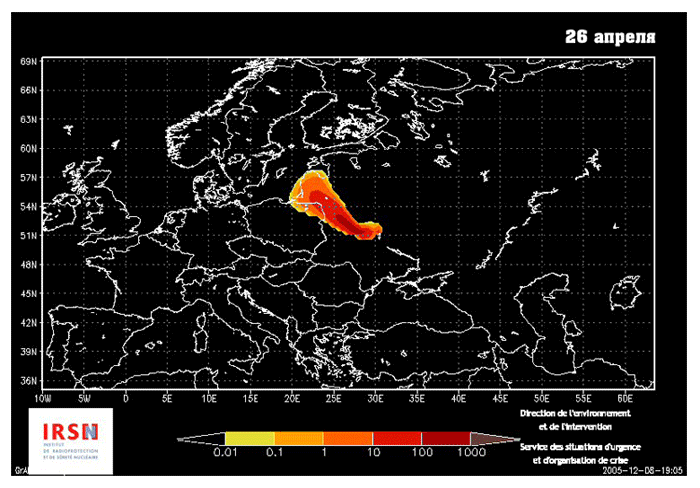45 km from Chernobyl produce milk with a tenfold excess of strontium-90

Belarusian farmer Nikolai Chubenok breeds cows and horses 45 kilometers from the sarcophagus of the Chernobyl nuclear power plant // Photo: AP Photo / Sergei Grits
On April 26, 1986, at 1 hour and 24 minutes, an explosion occurred at the 4th power unit of the Chernobyl NPP, which led to the largest man-made disaster of the 20th century. The main blow took a little Belarus. The population of this country for several centuries will have to live in conditions of radiation contamination.
Three decades later, Chernobyl continues to remind of itself. Infected food enters the markets, shops and even exports. For example, on the border of the resettlement zone, 45 km from the Chernobyl nuclear power plant, there is a farm and donates milk to a local plant of the Milkavita company, which produces parmesan cheese from it, mainly for export to Russia.
')
AP's correspondents visited the farm of Nikolay Chubenok in the village of Vorotts, 45 km from the Chernobyl NPP. The Belarusian proudly showed a cow herd of 50 heads and offered to drink milk. The journalists politely refused, but took a bottle for analysis of strontium-90 at the Minsk Center for Hygiene and Epidemiology.
During the test, experts found in milk a tenfold excess of the content of strontium-90 nuclides. According to the norms of the Ministry of Agriculture, the activity of strontium-90 in food products should not exceed 3.7 becquerel per kg. In the milk sample provided, this indicator was 37.5 Bq / kg.

According to AP, the specialists of the scientific center could not check the milk for the content of complex isotopes of americium and plutonium. It is possible that the content of these elements is also above the norm.
The management of Milkavita called the test results “impossible”. The plant constantly checks milk for isotopes, and the content of strontium is supposedly always below the norm.

Milking machine on the farm
At the same time, even the official authorities of Belarus recognize that farm managers save on fertilizers intended for application to polluted soils. “It’s gone up to the whole country that the head of the farm declares that it’s not advisable to take protective measures and inefficiently to apply increased doses of fertilizers to produce regulatory clean products,” said Vladimir Chernikov, head of the Chernobyl Chernobyl accident disaster recovery department, two weeks ago . He said that last year milk with a high content of strontium-90 was found on seven farms in the Bragin and Khoiniki districts of the Gomel region, in close proximity to the Chernobyl nuclear power plant, as was Nikolai Chubenko’s farm in the Khoiniki district.
So, the investigation of foreign journalists is not a sabotage of Western intelligence services against Belarus, as usual, but really seems to be true.
More than 70% of all radionuclides deposited on the territory of Belarus have been released into the atmosphere along with smoke from the Chernobyl NPP. Approximately 66% of the total territory of Belarus was contaminated with cesium-137.

Radioactive contamination of the territory of the Republic of Belarus with cesium-137 after the Chernobyl disaster
It got not only Belarus, but the whole of Europe.
Scheme of the spread of the radioactive cloud after the explosion at the 4th power unit of the Chernobyl NPP from April 26, 1986 to May 9, 1986

Based on materials from the Institute of Radiation Protection and Nuclear Safety (France)
The investigation of journalists AP says that the consequences of the largest nuclear accident in the world still make themselves felt.
Source: https://habr.com/ru/post/372153/
All Articles